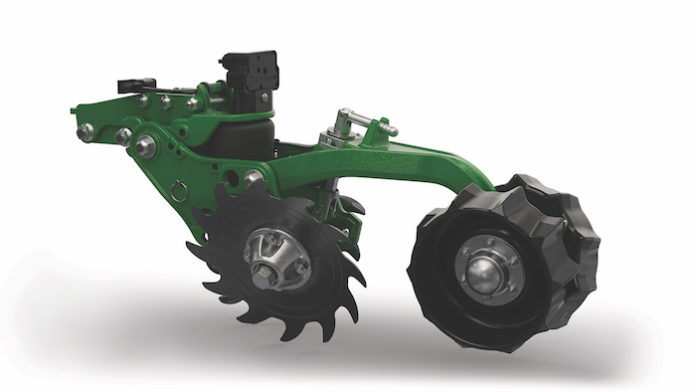This post may contain affiliate links which means I may receive a commission for purchases made through links. Learn more on my Private Policy page.
You’re a farmer with a keen eye for detail, always striving for precise work on your farm. The question on your mind – how do you properly align your farm machinery to achieve the level of precision you desire? In this article, we will explore the essential steps and techniques to ensure your farm machinery is perfectly aligned, allowing you to optimize your productivity and yield. So let’s get started and discover how you can achieve the precision you seek in your farm work!
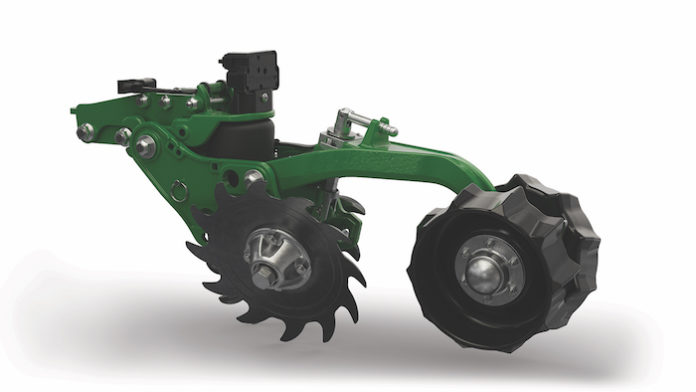
This image is property of www.no-tillfarmer.com.
Importance of Properly Aligning Farm Machinery
When it comes to farming, proper alignment of machinery is of utmost importance. It not only enhances efficiency and productivity but also reduces wear and tear on machinery, improves the quality of work, ensures safety for operators, and minimizes soil compaction. Let’s delve into each of these benefits to understand why properly aligning farm machinery is essential for achieving precise work on the farm.
Enhances Efficiency and Productivity
Properly aligned farm machinery plays a crucial role in enhancing efficiency and productivity. When machinery is aligned correctly, it operates at its optimal level, minimizing energy wastage. It allows for smooth and seamless movement of equipment, resulting in streamlined operations and increased output. By maximizing the efficiency of the machinery, farmers can save time and resources, thereby increasing overall productivity on the farm.
Reduces Wear and Tear on Machinery
Farm machinery is a significant investment for any farmer, so it is crucial to ensure its longevity. Proper alignment significantly reduces wear and tear on machinery. When equipment is properly aligned, it operates as intended, distributing loads evenly across all components. This ensures that no single part bears excessive strain, preventing premature wear and breakdowns. By reducing wear and tear, farmers can save on repair and replacement costs, extending the lifespan of their machinery.
Improves Quality of Work
The quality of work on a farm is directly influenced by the alignment of machinery. Proper alignment ensures that tasks are executed with precision and accuracy. For example, when planting crops, properly aligned machinery ensures that seeds are placed consistently at the desired depth and spacing. Similarly, during harvesting, well-aligned machinery can harvest crops efficiently without damaging them. By achieving precise work through proper alignment, farmers can increase the overall quality of their produce and subsequently its market value.
Ensures Safety for Operators
Safety should always be a top priority in any farming operation. Properly aligning farm machinery helps to ensure the safety of operators. Misaligned machinery can cause equipment to operate unpredictably, increasing the risk of accidents and injuries. For example, if a tractor’s wheels are misaligned, it may veer off course, posing a danger to the operator and others in the vicinity. By aligning machinery correctly, farmers create a safer working environment for their operators, reducing the likelihood of accidents and promoting a culture of safety on the farm.
Minimizes Soil Compaction
Soil compaction is a common issue in farming and can have detrimental effects on crop growth. Properly aligning farm machinery can help minimize soil compaction. When machinery is aligned correctly, weight is distributed evenly, reducing the concentration of pressure on specific areas of the soil. This allows the soil to retain its structure and porosity, facilitating healthy root development and improved water and nutrient absorption. By minimizing soil compaction, farmers can maintain healthier soil conditions, which directly impact crop yield and overall farm sustainability.
Steps to Align Farm Machinery
Now that we understand the importance of properly aligning farm machinery, let’s explore the steps involved in achieving optimal alignment.
Inspecting the Machinery
Before aligning farm machinery, it is crucial to conduct a thorough inspection of the equipment. This inspection helps identify any existing issues or potential areas of concern that may affect the alignment process. The inspection should include visual assessment, checking tire pressure, and examining key components.
Checking for Alignment Issues
Once the machinery has been inspected, the next step is to check for alignment issues. This involves measuring various alignment parameters such as toe-in and toe-out, camber and caster alignment, track width, and tread depth. Checking for alignment issues ensures that any deviations from optimal alignment can be addressed and corrected.
Adjusting Tires or Tracks
Tires or tracks play a significant role in the overall alignment of farm machinery. Adjusting them ensures proper weight distribution, reduces uneven wear, and maintains stability. This step involves setting the correct tire pressure, rotating tires regularly, replacing worn-out tires, and aligning tracks properly, if applicable.
Aligning the Hitch
Aligning the hitch is essential for ensuring smooth movement and proper functioning of implements attached to the machinery. It involves ensuring proper positioning, checking for misalignment, adjusting hitch height and angle, and maintaining proper weight distribution. Proper alignment of the hitch enhances the performance of implements, leading to more precise and efficient work.
Calibrating GPS Systems
For farms utilizing GPS technology, calibrating the GPS systems is crucial to achieve accurate and reliable guidance. This step involves verifying GPS signal strength, updating software and firmware, setting accurate field boundaries, and configuring guidance lines and curves. By calibrating GPS systems, farmers can ensure precise navigation and minimize errors in field operations.
Inspecting the Machinery
Before embarking on the alignment process, it is essential to conduct a thorough inspection of the farm machinery. This inspection helps identify any existing issues or potential areas of concern that may affect the alignment process.
Visual Inspection
Start by visually inspecting the machinery. Look for any signs of damages, loose components, or excessive wear. Pay attention to critical parts such as joints, bearings, and hydraulic systems. Any abnormalities should be documented and addressed accordingly.
Checking Tire Pressure
Proper tire pressure is crucial for the performance and alignment of farm machinery. Use a tire pressure gauge to check the pressure of each tire. Compare the readings with the manufacturer’s recommendations and adjust accordingly. Proper tire pressure ensures adequate load-bearing capacity and prevents uneven wear.
Examining Key Components
Inspect key components such as axles, steering systems, and suspension systems for any signs of damage or misalignment. Check for loose bolts or connections, leaks, and abnormal wear. Addressing these issues before alignment ensures that the machinery operates smoothly and optimally.
Checking for Alignment Issues
Once the machinery has been inspected, the next step is to check for any alignment issues that may affect its performance.
Measuring Toe-In and Toe-Out
Toe-in and toe-out refer to the angle of the wheels or tracks when viewed from above. Deviations from the recommended toe-in or toe-out measurements can cause poor steering response and irregular tire wear. Measure the toe-in and toe-out using a measuring tape or laser alignment tool. Adjust as necessary to meet the manufacturer’s specifications.
Checking Camber and Caster Alignment
Camber and caster alignment affect the stability and steering characteristics of the farm machinery. Camber refers to the wheel’s tilt inward or outward, while caster refers to the angle of the steering pivot. Use a leveling device or alignment tools to check the camber and caster alignment. Make adjustments if needed to ensure proper alignment.
Evaluating Track Width and Tread Depth
For machinery with tracks, track width and tread depth are critical for optimal performance. Measure the track width to ensure it matches the manufacturer’s specifications. Additionally, check the tread depth of the tracks to ensure they are within acceptable limits. Uneven or excessive wear may indicate misalignment or other issues that need attention.
Checking Parallelism in Multiple Implement Systems
In situations where multiple implements are used simultaneously, ensuring parallelism is vital. Misaligned implements can lead to uneven work patterns and reduced efficiency. Check the alignment of each implement with respect to the primary machinery. Adjust as necessary to ensure parallelism and optimal performance.
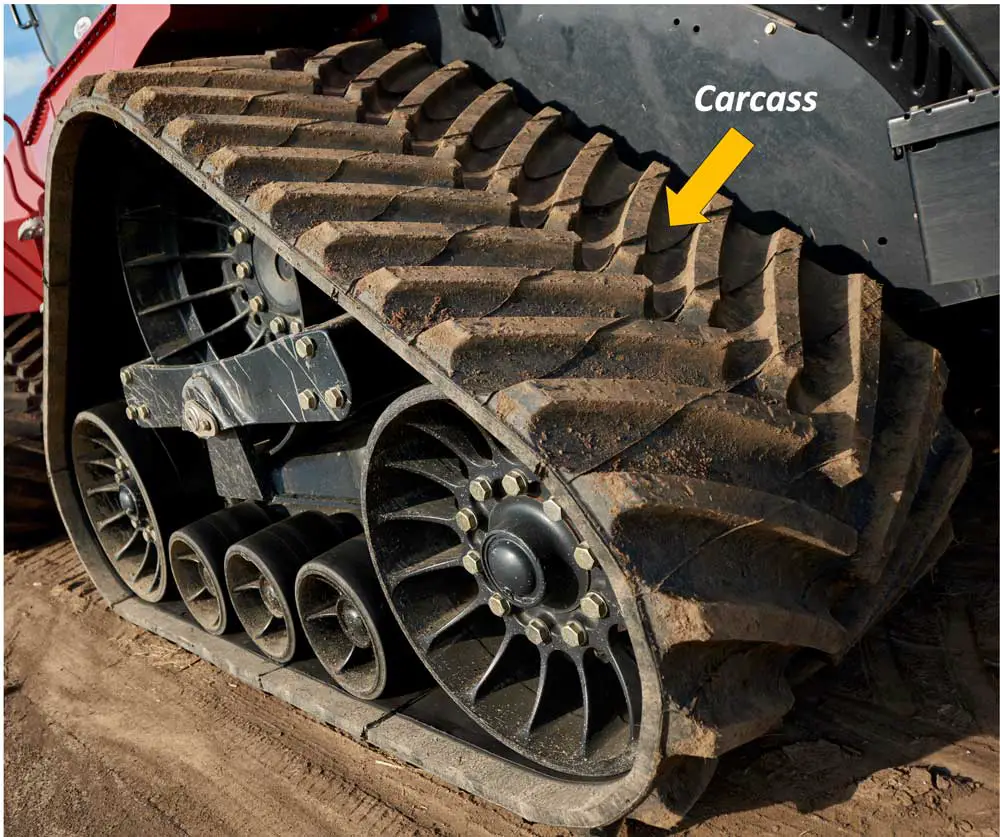
This image is property of www.farm-equipment.com.
Adjusting Tires or Tracks
Proper alignment of tires or tracks is essential for the overall performance and longevity of farm machinery. Here are the steps to adjust tires or tracks for optimal alignment.
Setting the Correct Tire Pressure
Maintaining the correct tire pressure is crucial for achieving proper alignment. Refer to the manufacturer’s recommendations for the optimal tire pressure. Use a tire pressure gauge to measure the pressure of each tire. Adjust as needed to ensure consistency.
Rotating Tires Regularly
Regularly rotating tires helps to ensure uniform wear and prolong the life of the tires. Follow the recommended tire rotation pattern specified by the manufacturer. By rotating tires, you can prevent uneven wear and distribute the load more evenly across all tires.
Replacing Worn-out Tires
Worn-out tires can negatively impact the alignment and performance of farm machinery. Inspect tires regularly for signs of excessive wear, such as low tread depth or visible damage. Replace worn-out tires promptly to ensure proper alignment and prevent further damage to the machinery.
Aligning Tracks Properly
For machinery equipped with tracks, proper alignment is crucial for optimal performance. Follow the manufacturer’s guidelines for aligning the tracks. Ensure they are parallel, evenly tensioned, and positioned correctly. Proper alignment of the tracks promotes stability and prevents premature wear.
Aligning the Hitch
Aligning the hitch is essential for ensuring smooth movement and proper functioning of implements attached to the machinery. Here are the steps to align the hitch properly.
Ensuring Proper Positioning
Start by positioning the implements and adjusting their hitch mountings as needed. Ensure that the hitch connects with the implement securely and aligns with the tractor’s hitch point. Proper positioning is essential for efficient power transfer and minimizing stress on the machinery.
Checking for Misalignment
Inspect the hitch connection to ensure there is no misalignment. Misaligned hitches can cause increased wear on components and reduce the efficiency of the implement. Use visual inspection or measurement tools to verify alignment, making adjustments as necessary.
Adjusting Hitch Height and Angle
The height and angle of the hitch have a significant impact on the performance and alignment of the implement. Check the recommended height and angle specifications provided by the implement and tractor manufacturers. Make adjustments accordingly to ensure proper alignment and optimal performance.
Maintaining Proper Weight Distribution
Proper weight distribution is essential for maintaining stability and preventing excessive strain on the machinery. Ensure that the implement is balanced correctly and the weight is distributed evenly. Adjust weight distribution as needed to achieve the optimal balance and alignment of the hitch.
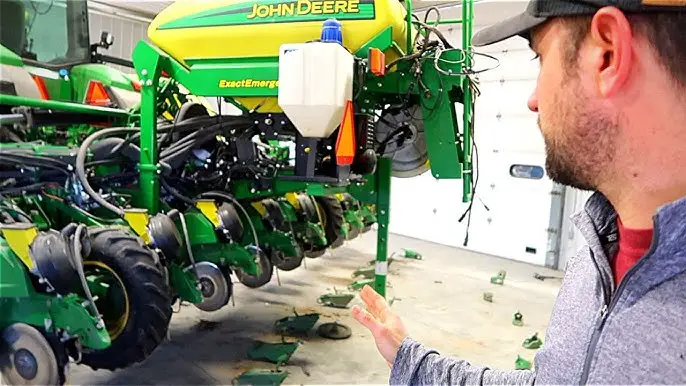
This image is property of i.ytimg.com.
Calibrating GPS Systems
For farms utilizing GPS technology, calibrating the GPS systems is crucial to achieve accurate and reliable guidance. Follow these steps to calibrate your GPS system for precise field operations.
Verifying GPS Signal Strength
Before calibrating the GPS system, ensure that the signal strength is strong and consistent. Weak GPS signals can lead to inaccurate guidance. Verify the signal strength at various locations on the farm to ensure reliable GPS positioning.
Updating Software and Firmware
Regularly update the software and firmware of your GPS system to ensure optimal functionality. Updates may include bug fixes, improvements, and new features that enhance the accuracy and performance of your GPS-guided machinery.
Setting Accurate Field Boundaries
Define accurate field boundaries in your GPS system to ensure precise navigation within the designated areas. Use GPS coordinates or field mapping tools to clearly define the boundaries and minimize the risk of deviation during field operations.
Configuring Guidance Lines and Curves
Configure guidance lines and curves based on your desired field operations. Utilize the GPS system’s capabilities to create straight lines or curved paths for planting, spraying, or other field tasks. Configure the guidance lines and curves to maximize accuracy and minimize overlaps or gaps.
Special Considerations for Precision Farming
Precision farming techniques offer advanced capabilities for achieving precise work on the farm. Here are some special considerations for incorporating precision farming into machinery alignment.
Using Auto-steer and Auto-guidance Systems
Auto-steer and auto-guidance systems leverage GPS technology to provide highly accurate and automated steering of farm machinery. These systems enable seamless navigation and precise operation, reducing human error and increasing overall efficiency.
Implementing Variable Rate Technology
Variable rate technology allows farmers to apply inputs such as seeds, fertilizers, and chemicals at variable rates based on specific field conditions. Properly aligning machinery is crucial for accurately delivering variable rates and ensuring precise application without overlap or underutilization.
Utilizing Section Control
Section control systems enable farmers to control specific sections of planting or spraying equipment independently. Proper alignment is crucial for seamless activation and deactivation of sections, minimizing overlaps and avoiding missed areas. Implement section control to optimize input utilization and work efficiency.
Incorporating Data Management Systems
Data management systems play a vital role in precision farming. Proper machinery alignment ensures accurate data collection, enabling farmers to make informed decisions based on real-time information. Align machinery to ensure reliable data collection and maximize the benefits of data-driven farming practices.

This image is property of datamyte.com.
Common Challenges in Machinery Alignment
While proper alignment is essential, there are common challenges that farmers may face during the alignment process. Let’s explore these challenges and how they can be addressed.
Misalignment due to Equipment Aging
As farm machinery ages, misalignment can occur due to wear and tear or improper maintenance. Regular inspections and maintenance can help identify and address alignment issues promptly. It is essential to follow the manufacturer’s guidelines for maintenance to prevent misalignment and ensure optimal performance.
Adapting to Different Field Conditions
Field conditions can vary significantly, requiring adjustments in machinery alignment. For example, different soil types may necessitate changes in tire pressure or track width. Stay observant of field conditions and be prepared to make necessary adjustments to align machinery for optimal performance in different environments.
Dealing with Multiple Implement Interactions
Using multiple implements simultaneously can pose challenges in aligning them properly. It is crucial to ensure parallelism and correct alignment between the primary machinery and each implement. Take the time to adjust and fine-tune the alignment of each implement to optimize their performance collectively.
Addressing Varied Terrain Challenges
Farms often have varied terrains, from flat fields to steep slopes. Aligning machinery to accommodate these terrains can be challenging. Consider using adjustable parts or attachments that allow for flexibility in alignment. Additionally, ensure proper weight distribution and balance to maintain stability on uneven terrain.
Conclusion
Proper machinery alignment is crucial for achieving precise work on the farm. By following the necessary steps and regularly maintaining the equipment, farmers can enhance efficiency, reduce wear and tear, improve work quality, ensure operator safety, and minimize soil compaction. Implementing precision farming techniques and overcoming alignment challenges contribute to sustainable and productive agricultural practices. So, take the time and effort to align your farm machinery properly, and reap the benefits of precise and efficient farming operations.
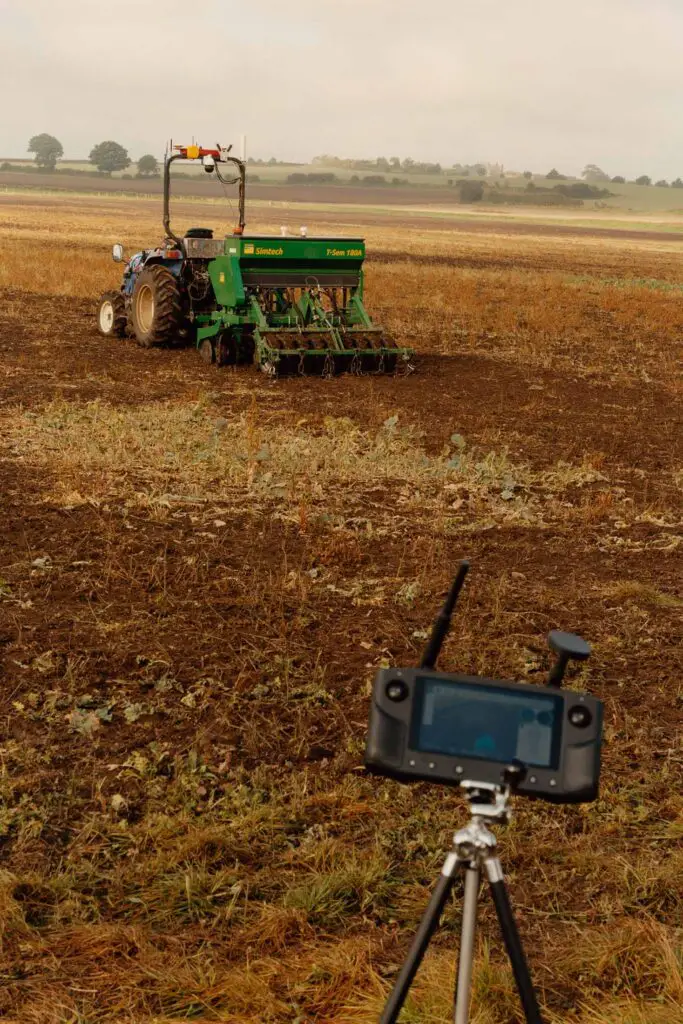
This image is property of assets.bwbx.io.
This post may contain affiliate links which means I may receive a commission for purchases made through links. Learn more on my Private Policy page.

